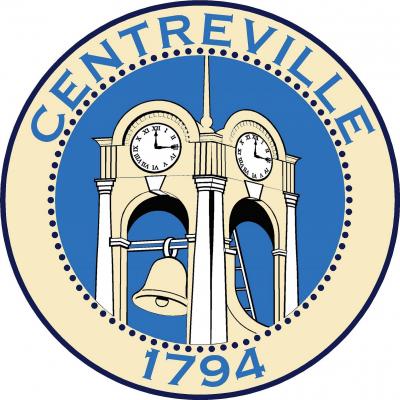Town History
In 1782, an Act of the Assembly authorized the removal of the county seat from Queenstown to a more central part of the county That’s why the town was named “Centre Ville”, with French spelling because of the post-Revolutionary War admiration for the French.
Ten years passed before acquiring the site where the Courthouse now stands from Elizabeth Nicholson, “not more than 2 acres on a hill rising at her outer gate, adjoining the main road leading from Chester Mill to Chester Hill where the road from Corsica Warehouse (a tobacco custom house) intersects the main road.”
Construction began on the Courthouse in 1792 and two years later the original town commissioners of Centre Ville, appointed by the legislature in 1794, designed the town on 37 lots arranged along two north-south streets — Commerce and Liberty. Water Street was the main east-west road. The original commissioners were Richard Hall, Henry Story, William Hopper, Emory Sudler, Jr., John Wells, Joseph Hopper Nicholson, and Richard Tilghman Earle.
The courthouse was completed sometime after 1792 and the first recorded case was heard in 1794. It is the only courthouse in Maryland which has been in continuous use since its construction. In 1877, the main building was extended 30 feet in width and the northern wing doubled in size. It remains the centerpiece of the town with its tree-shaded green, boxwood hedges and the statute of her ancestor that was built in 1977.
An Act of the Assembly in 1796 provided for the building of a market in Centreville and the town commissioners advertised in 1797 for a structure to be 28 x 14 feet with the cost of construction to be defrayed by subscriptions. In 1877, the Market House was replaced by the Town Hall, a frame building 40 x 70 feet with a brick structure underneath where fire equipment was kept. In the front were shops and a large room for plays, meetings, dances, etc.
In 1803, work began on an Academy in Centreville, and in 1804, the trustees advertised for two teachers. Another school was started the next year. The primary school system was established in 1826, and in 1893, the Male Academy (now a bed and breakfast on North Commerce Street) was absorbed into the school system.
The Centreville Jockey Club announced horse racing in 1805 at a location called Clover Green. Local tavern keepers offered purses; most of the horses were bred locally and trained by their owners.
St. Paul’s Parish built the first church on the old Queenstown Road near Centreville around 1640, which was replaced in 1693 with a brick building. A church was suggested for Centreville in 1831 and the cornerstone laid in 1834. The old Chester Church was torn down and some of the timbers and bricks were used in the new building.
Soon after 1800, the town was becoming a market location for the area. Thomas C. Earle had a general store in 1804, while James Nicholson and George Atwood opened a grocery store the same year. The first bank was erected in 1876 and another bank opened on Lawyers Row in 1884. The first bank remains the Centreville National and the second — the Queen Anne’s Bank — is now the Town Office.
A town Centennial was celebrated on July 4, 1876, with a procession of children led by R. Goldsborough, William D. Keating, and J.W. Chambers. An oration was delivered by A.R. Weedon; Wilmer Emory read the Declaration of Independence; a salute was fired and music provided by the Easton Mozart Bank.
The 1994 Bicentennial found the town little changed from the Centennial year.
It is still a commercial center for an agricultural area, but U.S. 301 bypasses the town and busy State route 213 runs through town. A business park at the southern end of town was recently completed and boasts several new stores. The town has a modern library, a comprehensive high school, a middle school and two elementary schools. There is a well-equipped volunteer fire company — Goodwill — with fire and ambulance equipment and even a couple of fast-food eating establishments. The atmosphere of the town remains unchanged although the people who live here are in step with the fast-moving world around them.

